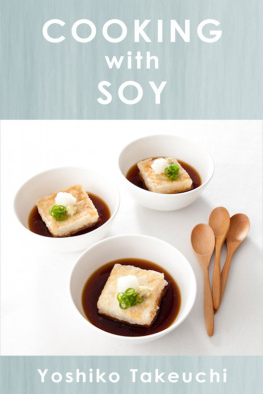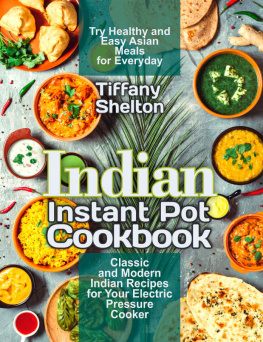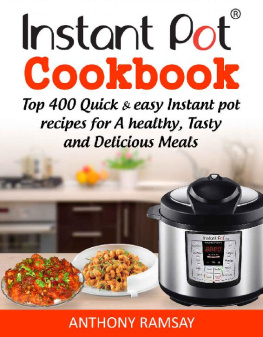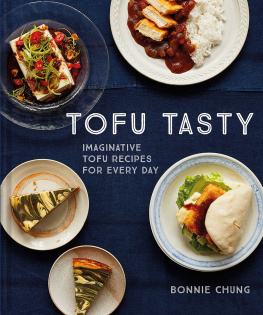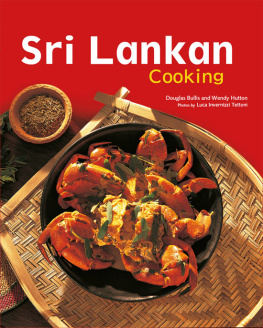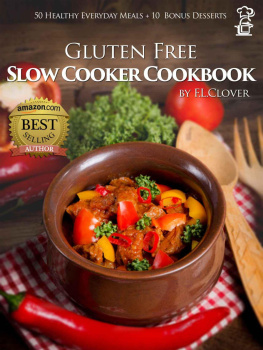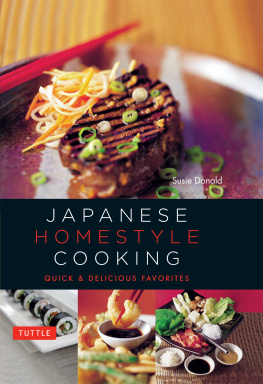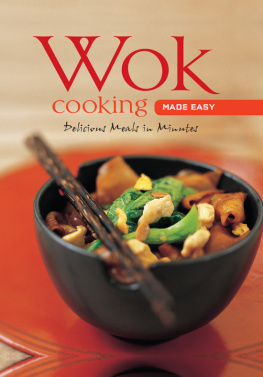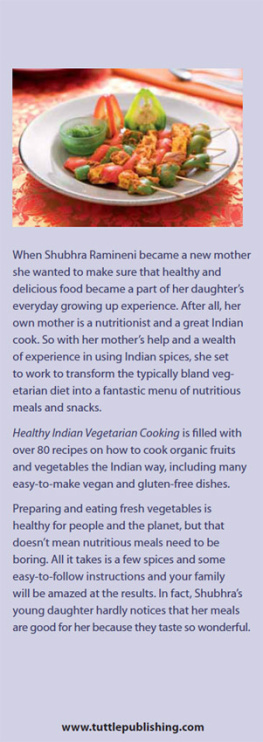Cooking withSOY
All rights reserved. No partof this publication may be reproduced, stored in a retrieval systemor transmitted, in any form or by any means, electronic,mechanical, photocopying, recording or otherwise, without the priorwritten permission of the publishers and copyright holders.
Copyright 2015 in text:Yoshiko Takeuchi
Copyright 2015 in images:Sherly Susan
Photographs: Sherly Susan www.sherlysusanphotography.com
Food stylist: YoshikoTakeuchi www.healthysoycooking.com
Assistant chef: RieSakata
Designer, e-book authoring:Yumi Kamei peekabooks.com@gmail.com

Thanks to Noritake forcrockery and glasses.
Spiral foods for providingquality products for this book.
A Message From Author
My hope is that this bookwill inspire healthy living.
May this book be helpful anduseful to those who would like to increase their plant-based mealsfor ultimate health, those who have diet restrictions because ofallergy or disease and those who gave up or are trying to give upanimal products because of their love and care for animals and theearth.
Let's enjoy cooking andeating even more!
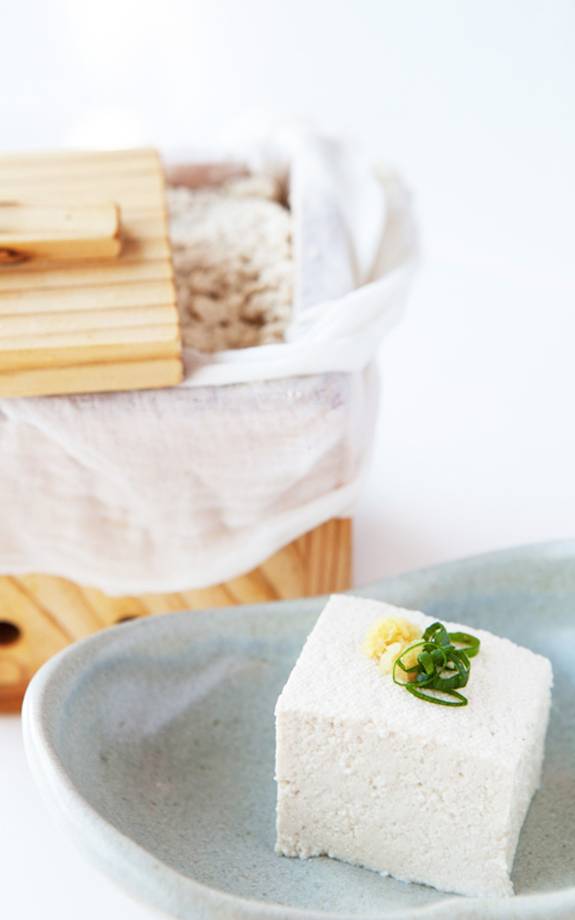
CONTENTS
Why cooking with soy?
I have always believed that what we doin this world should reflect our greatest passions.
I love food and I enjoyanything to do with food; not only eating and cooking it, but alsolearning about food and its nutritional benefitseven shopping. Ialso enjoy sharing recipes and passing on my cooking skills. Thatis why I have been a chef for over a decade and have taught cookingfor nearly 20 years, both in Japan and Australia.
I love almost all foods, butI have a special passion for tofu. There might be food out therethat is tastier than tofu and some people think tofu is bland andso avoid it. But tofu is a healthy foodit is low in fat andcalories, has zero saturated fat, its cholesterol-free, rich inprotein and provides bone-healthy minerals, like calcium, potassiumand magnesium. The benefits of tofu are many and easy to find.
I have a strong passion forhealth and place a high value on it. So I love that tofu can be soversatile and yet deliver the benefits I need for a healthy life.You can eat it plain, deep-fried, stir- fried, steamed, grilled orstewed. You can use it to make sauces, dressings and desserts. Youcan change the shape of itslice it, dice it, grate it, puree it,crumb itthere are so many choices.
Tofu and other soy productshave been widely used in Asian cuisine for more than a thousandyears and yet they can be used in any type of cuisineEuropean,Middle Eastern and South Americanas you will discover in thisbook.
In 2007, I started HealthySoy Cooking to help inspire healthy living and to teach innovativeways to cook with tofu and other soy products such as edamame,miso, soy sauce, soymilk and more.
Since then I have beencreating various soy dishes; and not just for Japanese styles, butalso for other cuisines I learnt through my commercial cookingdays, working in various restaurants. This is the book where I canfinally share with you the recipes that I have been teaching andcreating for almost 20 years.
So heres hoping I caninspire you to eat and live healthily, and open up your world tothe magic of these healthy and tasty soy dishes!
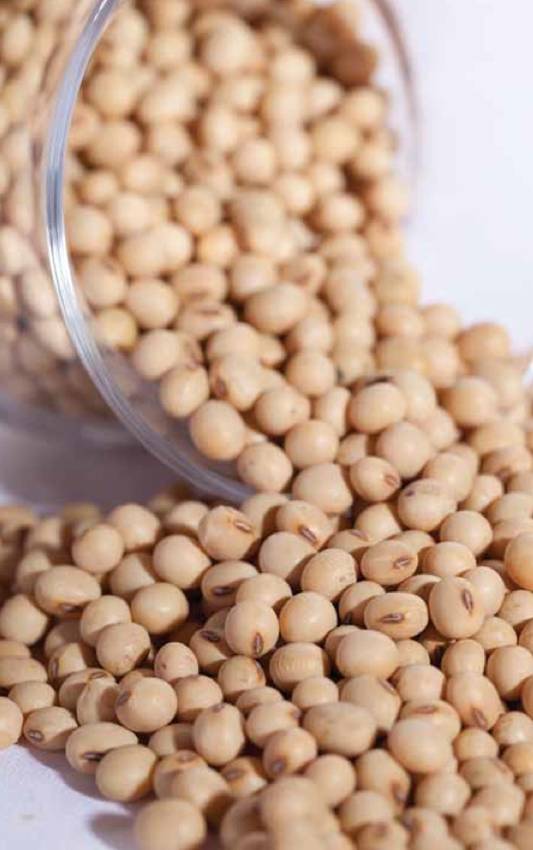
The story of soy
Go natural
Soybeans are a kind of beanthat is used in many various kinds of foods, ranging from soy milk,soy sauce, miso, and tofu. Soybeans are also commonly included invegetarian and vegan diets due to their nutrient rich nature, andalso because of their versatile texture. Soy has been included inAsian cuisine for many hundreds of years, and has more recentlyentered Western cuisine.
The health benefits ofsoy
Soy is commonly known as ahealthy food. As it can be used as a meat substitute, it is highlynutritious with many health benefits, such as:
1. High in fibre
2. High in protein
3. Free of cholesterol andlactose
4. Low in saturated fat
5. Prevents bone loss
6. Source of omega-3
7. Good source ofisoflavones
8. Contains high amount ofphytoestrogens, which can help with menopausal symptoms
9. Source of antioxidants
10. Good source of estrogen,which strengthens bones and also lowers cholesterol
The history of soy
Soybeans first originated inChina, and were later cultivated in Japan and other Asiancountries. Soybeans were first grown in Asia for their seeds, whichwere used for fermented, dried and fresh foods in Asian diets. Soyfeatures as a primary product in many Asian cuisines, andespecially in Japan. Japanese cuisine features soybeans in manyforms, incorporating them into their cuisine on a daily basis.
In the early 20th century,soybeans began to be cultivated in America and were initially usedas a manure. It was only after the 1940's that soybeans began to begrown as a food product in America. Today, the US is the largestmanufacturer of soybeans in the world, along with Brazil,Argentina, India and China also producing large amounts. Soybeansand soy by-products are now readily available in many supermarketsin Western nations. Despite this, the majority of the soybeansproduced in the US are GMO. There is a lot of controversy aroundGMO food, and particularly GMO soybeans. Conflicting argumentsabout the nature of soy will be explored in the text below.
Japan: The soy country
In Japan, soy is eaten everyday in many different ways. Soy sauce is the most common seasoningused in Japan. Soy is consumed in many common food dishes in Japan,such as miso (fermented soybean paste) soup, which is one of themost common national dishes in Japan and is consumed on a dailybasis, and very commonly, even more than once a day. In addition totofu, there are also many other kinds of tofu by-products eaten inJapan, which include aburaage, natto, okara, edamame, atsuage andkinako, which are just a few of them. A fermented soy product likenatto is eaten as part of a traditional Japanese breakfast or lunchevery day.
In places in Japan such asizakayas, there are always many different kinds of tofu dishes onthe menu. The three most commonly consumed soy products in Japanare tofu, miso and soy sauce. These three products are consumed ona daily basis for most Japanese people. Although these soy productsare so commonly consumed in Japan, Japan is not a big consumer ofsoy milk, which differs highly from Western nations who consumelots of soy milk.
In contrast with Westernnations, Japan eats most of its soy products in a whole form. InJapan there are also shops that specialise in selling tofu and tofuproducts, so people have the option of buying freshly made tofuevery day. Japan has one similarity with Western nations in thatJapanese people consume many soy products on a daily basis. As soyis used in many processed foods, many people in Western nations areconsuming soy products unknowingly every day. Soy is one of theessential staples of the Japanese diet, but Japanese people consumesoy in different ways than Western nations, which may account forthe health differences between the two.
As Japanese people do notconsume soy in its processed form, they are more likely to receivemany of the health benefits of soy. As the Japanese soybeanproducts are largely made from the whole bean, people who consumesoy in this way are less likely to suffer from negative effects.Like any other beans, it is said that consuming soy causesdigestion problems. Eating fermented soy products, such as miso,can actually aid digestion though, so a good suggestion would be totry these kinds of soy products first.
Next page
